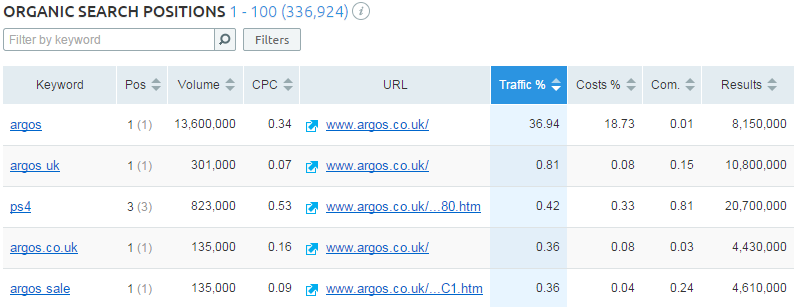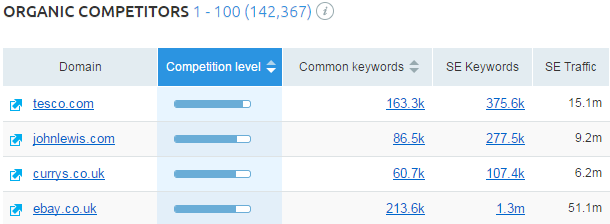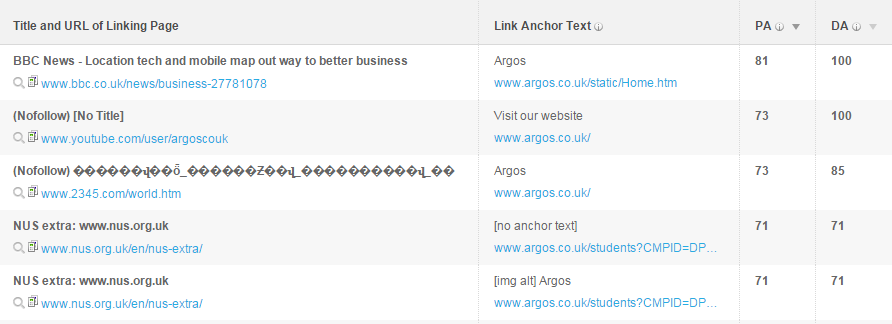Understanding the competition is essential for any business, be it a start-up or a long-established company.
Competitive research can provide invaluable insights into not only what your competitors are doing right, but also what they are doing wrong.
Getting to better know the competitive landscape in your industry doesn’t necessarily need to be time-consuming or difficult either, thanks to the wealth of information available on the Internet.
In this article, we’ll take a look at how to suss out your competitors SEO strategy, and identify new link building opportunities for your website.
Identifying your competitors
Before you can start learning about your competitors and how they are achieving higher standings in the search engine results, you’ll first need to identify them.
One of the best ways to determine who your main competitors are is to put yourself in the shoes of a customer and conduct some searches in Google to determine which other companies are showing up on the first page of the results.
[Tweet “Competitor research is a great way of finding new link opportunities. Find out how…”]Alternatively, if other companies sell the same products as you do, conduct a search for the products in question to identify others who are also selling them; the numerous online price comparison services can be of assistance for this task.
Most importantly, you should not limit your search entirely to other companies and websites that are similar to your own, but any website which uses the same keywords and phrases to compete with you in the search engines.
Analysing your competitors’ positions in Google
Once you have identified your potential SEO competitors, be they long-time industry competitors or any other websites targeting keywords that are also related to your business, you’ll need to determine their standing in Google and other major search engines.
Your goal should ultimately be to get into the first page of the search results whenever someone enters a query containing your targeted keywords and phrases, as few users ever look beyond Google’s first page.
There are a number of important criteria to take into account when conducting an effective analysis of a competitor’s SEO strategy, such as website usability and layout, site structure and keyword consistency and ranking.
You can even glean some useful insights simply by searching for relevant keywords in Google and seeing which companies appear in the first page of the results; these companies will likely be targeting the keywords and phrases that you just searched for as part of their search engine marketing strategy.
To get a more detailed overview of the keywords that your competitors are targeting and where they are ranking, you can use the free service provided by semrush.com.
 SEMrush Overview
SEMrush Overview
This competitive analysis tool provides live updates on organic keywords, ad keywords and positional information. By paying close attention to the Organic Keywords section, you’ll be able to get some useful keyword ideas for your own SEO campaign.
 SEMrush competitor organic search positions
SEMrush competitor organic search positions
The free version of SEMrush allows you to see and export the first 10 lines of any of their reports, and run 10 reports – a good place to start. You’ll have to pay to see and export data beyond that.
 SEMrush organic keyword competitors
SEMrush organic keyword competitors
For more information, take a look at this guide to getting started with SEMrush.
Analysing your competitors’ link profiles
Open Site Explorer and Majestic SEO are among the most popular tools for analysing the link profiles of your competitors’ websites.
Your site link profile is one of the most important elements in SEO, since it helps Google understand the authority, popularity and subject of your website.
Simply put, inbound links on high quality, relevant websites help to boost a website’s standing in the search engines, while low-quality links tend to have the opposite effect.
When analysing the link profile of a competitor, the single most important piece of information to look out for is the list of the most valuable inbound links that a website has.
Services such as Open Site Explorer and Majestic SEO allow you to see which websites are linking to your competitors’ websites as well as to your own.
 Backlink profile data – Majestic SEO
Backlink profile data – Majestic SEO
The most valuable links will be from established websites with a high domain and page authority, and if your competitors are being linked to by such websites then, ideally, yours should be as well.
For a great overview of using Majestic SEO, check out this video guide.
However, the website in question will need to be relevant to your own website in terms of subject matter.
Open Site Explorer, though it doesn’t give positional information for keywords itself, provides a great deal of useful information such as Page Authority, Domain Authority, Anchor Text used (if any) and social media metrics for web pages*.
*Subscription required for full functionality.
 Finding competitor backlinks – Open Site Explorer
Finding competitor backlinks – Open Site Explorer
Finding link building opportunities
By getting a detailed overview of your competitors’ link profiles, you’ll be able to seek out new link building opportunities to help boost your exposure in the search engines.
However, you will need to have realistic expectations at the same time; after all, a new or lesser-known company is not likely to be able to score the best inbound links from high-ranking and authoritative sources overnight.
Tools such as Majestic SEO and Open Site Explorer allow you to identify new link building opportunities while also exposing potential issues with links pointing to your own website, such as those which are from low quality and/or irrelevant sources.
For a detailed guide on competitive link building using Open Site Explorer, check out this post over at BuzzStream.
Never miss a link, use 301 redirects
If you notice any great links going to pages that no longer exist on your website, make sure you use a 301 redirect to redirect that link to a relevant page on your site that is online.
Check out our guide on 301 and 301 redirects for more details.
Call in some favours!
Other link building opportunities to look out for are those on specialised online directories, partners, vendors and suppliers – all of these are links worth trying to get if you do not already have them in your backlink profile.
Consider who your company already has a relationship with. Suppliers, vendors and partners are a must. If they are not linking to you, just drop the right people an email. You might get lucky!
Conclusion
You should continue to keep an eye on your competitors’ standings in the search engines on a regular basis. After all, they will likely be doing the same, and in order to remain competitive yourself, you’ll need to constantly keep informed as to what the leaders in your industry are doing!
Your say!
Do you do competitor research? What tools do you use?
Do you know if your competitors are spying on you? They just might be!

2 thoughts on “Beginners Guide to Competitive SEO Research”
Comments are closed.